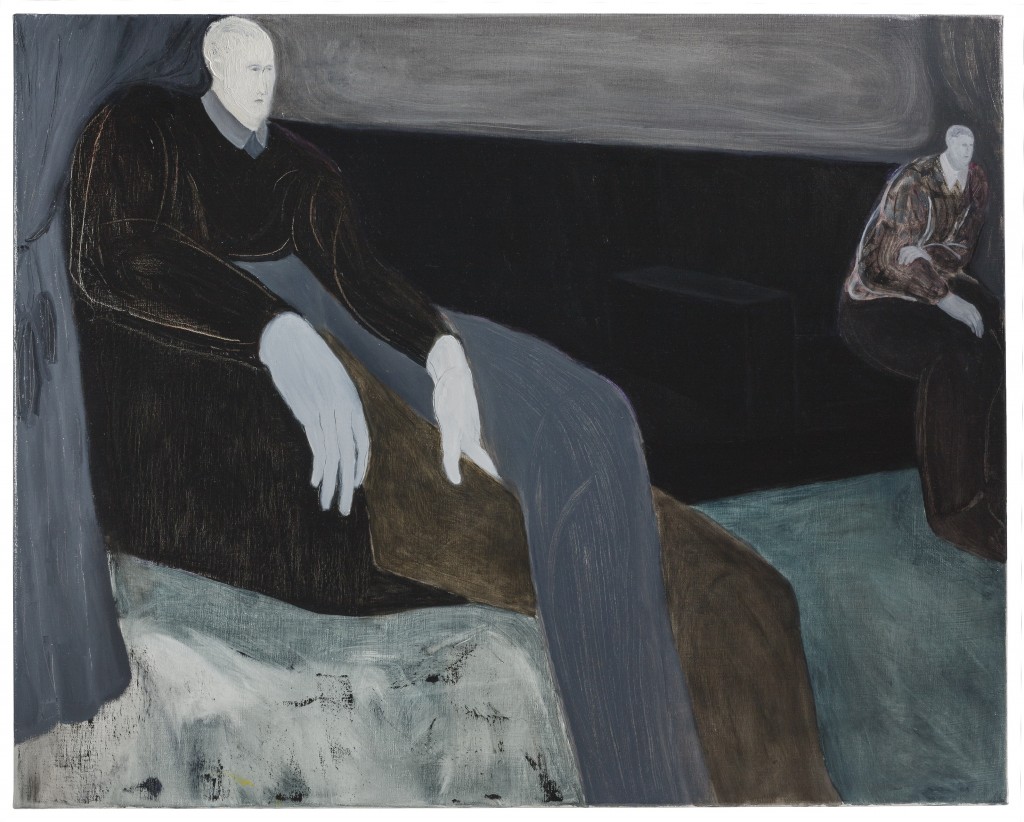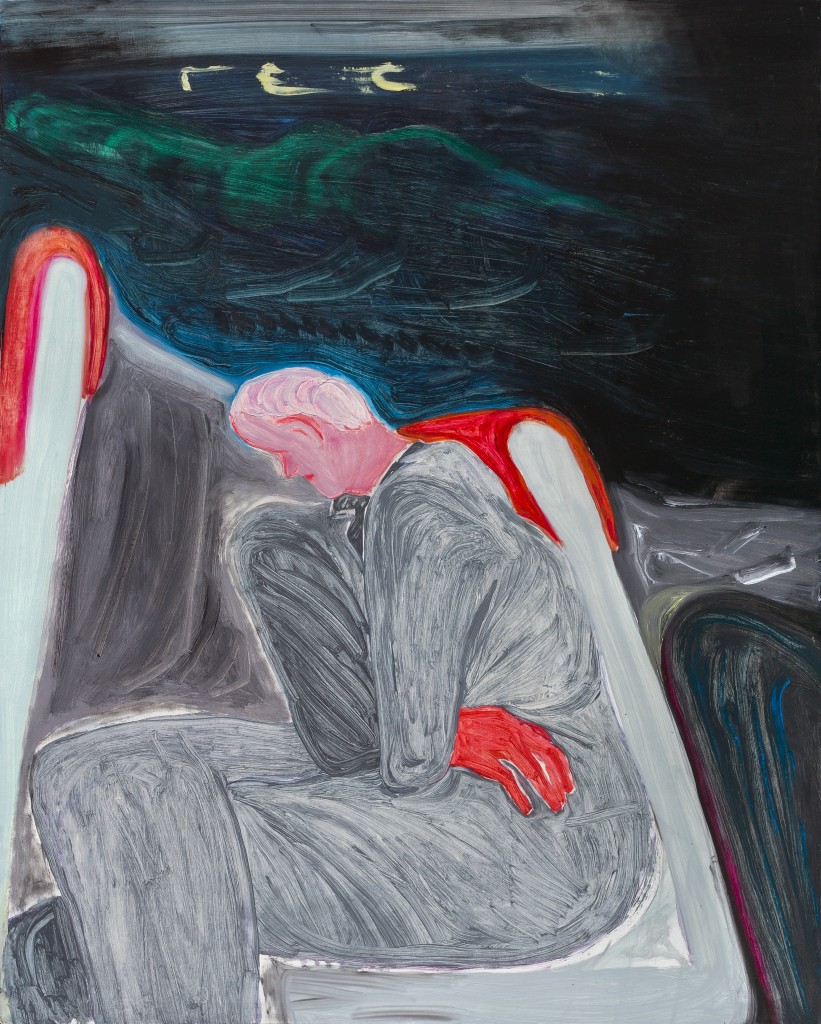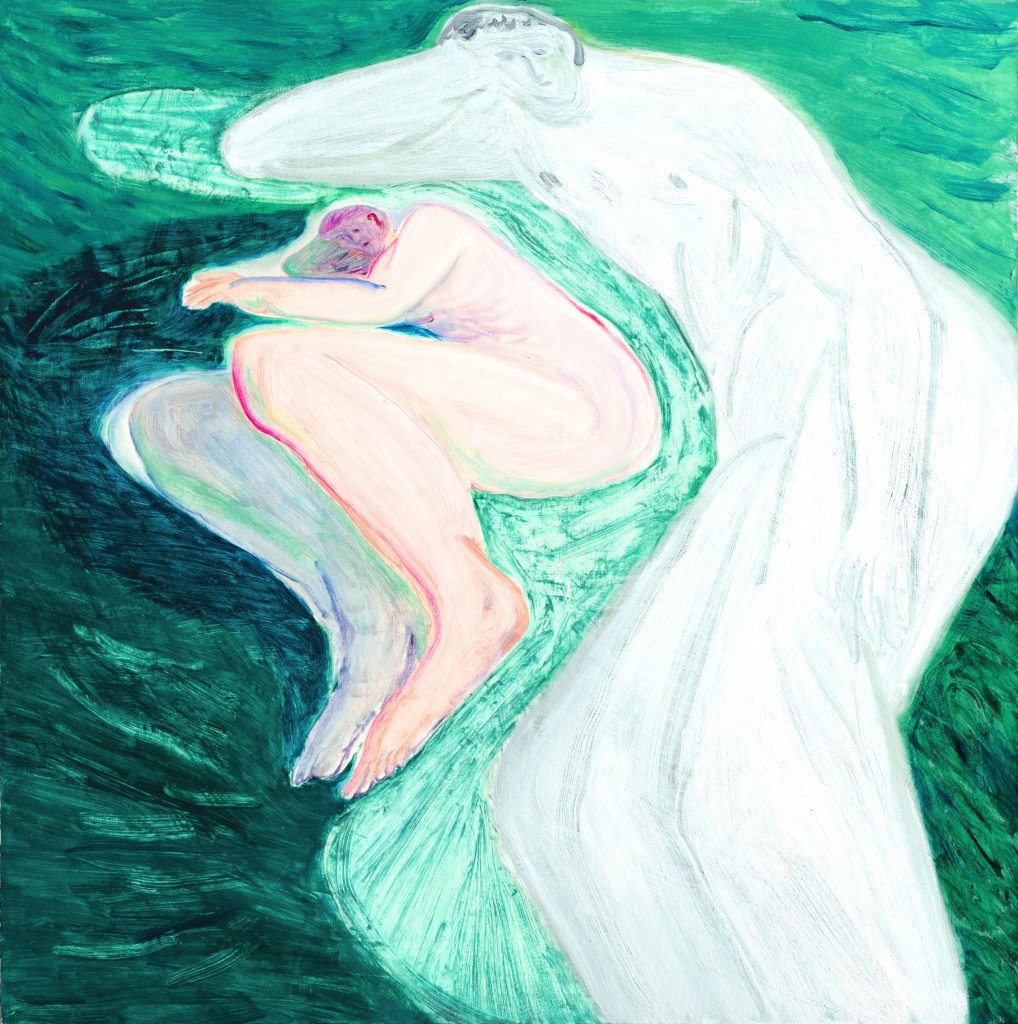Reflection
Being One or One of Them
 The Cinema (2013)
The Cinema (2013)
Hu Fang: Looking at your paintings, I often feel immersed in the atmosphere, get emotionally drawn into the situation you depict and can’t help but identify with the characters. When I look at a figure in one of your portraits, I can feel the weight of his or her gaze. This energy can put the viewer into a state of contemplation that appears to involve both sides, unlike a gaze that goes in just one direction. I call it “contemplation” because it is more than just a viewer looking at a painting. Instead it gives me a strong feeling of “being in a situation” – not in the reality that inspired the painting, but rather in a space of ambiguity, filled with possibilities waiting to unfold. When you are painting a particular situation, do you go through it over and over again in your mind? What does space, or void, mean to you?
Firenze Lai: When I paint these situations, I always ask myself: What is space to the figures inside the frame? What exactly is the situation I am trying to paint? How does a character adjust his mind and body to adapt to the circumstances he finds himself in? Sometimes he is self-conscious, at other times he is not.
Everyone has a different definition of time and space. It largely depends on where you are. I live in a fast-paced city where everyone has to constantly readjust himself. Many different things happen in a single day. Between one such incident and another, there is a void. Often this void is nothing but a transient and fleeting moment which gives you just enough time for the tiniest of adjustments.
I am fascinated by this continuous series of brief changes and adaptions. Sometimes when I ride the MTR, I am so close to other passengers that I can feel their presence in a very acute way. They stand wearily, constantly shifting from one foot to another to avoid brushing against complete strangers. At other times, I observe strollers in shopping malls pacing around, tracing the patterns of the tiled floor in oblivion. And sometimes I encounter old people muttering strings of numbers, walking backwards and taking in long, languid breaths between their steps, their eyes gazing into an unknown distance. In these moments of ambivalence I can see how these individuals are getting along with themselves, how they appear different but also share similarities.
When I am painting, I often immerse myself completely in the scenario I am trying to depict. Perhaps I have been in the same situation before, doing the same thing, experiencing the same state of mind.
 Stomachache (2014)
Stomachache (2014)
Hu Fang: Some of your figures appear to be in the middle of a whirlpool. They are surrounded by a strong current that draws everything into a downward spiral. Let’s take the person suffering from stomachache as an example (Stomachache, p.119). His right hand has turned red, a powerful echo of the red patches on the back of the seat. Above him, specks of light emerge from the dark night sky. I often see light and energy in your works when they show humans interacting with a supernatural power. That reminds me of yet another of your paintings, the one showing a woman riding on a bus (Bus Journey, p.79). The mood is depressive and trance-like but to me, this brought out a sense of inner tranquility, of calmness at the core of suffering.
Now I understand why the light, colours and forms in your paintings are so inseparable – because you let your character’s point of view guide your brush. The figures in your paintings may be deformed, but this way they are able to escape reality and stay true to what they want to be. Do you often relate to these figures? Is painting them your way of connecting with the world?
 Grass Slope (2014)
Grass Slope (2014)
Firenze Lai: I would say these figures are similar to adjectives in a sentence – they carry emotions. Or perhaps the Buddhist concept of “external appearance” might be a better term for what I am trying to say.
Many people, including myself, tend to fall into a brooding state of mind. I get carried away quite easily and I’m curious if other people pay attention to me while I am sitting there, my mind drifting away. When I’m painting, I try to put myself in other people’s place and imagine myself in a similar setting, sitting in the same position. When they look at my paintings, viewers may have a similar experience.
We all know the feeling of not being able (and not needing) to put something into words. I find nonverbal communication very important and that is why I like to express it in my paintings. Many of my paintings seem to have “disconnectedness” or an isolated “individual” as their theme. But they are actually about “connectedness” and “collective” experiences.
In our lives we constantly shift between “being one” and “being one of them”, that is between being an independent self and a part of a group. I believe that this shifting between roles is responsible for what may be called our “external appearance”.
Painting is the form of communication I’m most comfortable with, and my portraits help me understand myself and other human beings better.
(The above e-mail dialogue took place in February and March 2014.)
Text & Image: Courtesy the artist and Vitamin Creative Space.